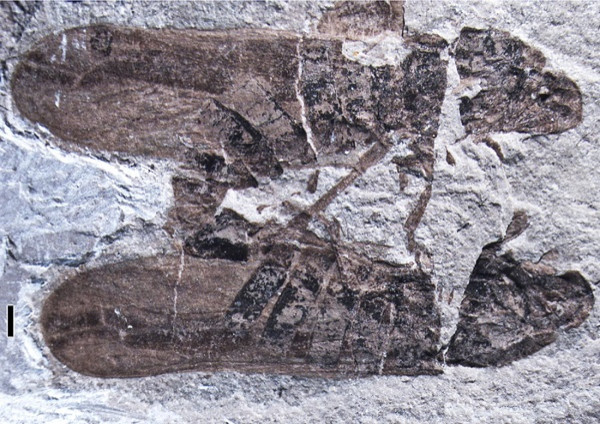The Week In Science: Insect Sex Preserved In Stone, 'Lawn Sprinkler' Asteroid

This week in science, we were introduced to a previously unknown cousin of Tyrannosaurus rex, an ancient giant platypus, and learned we might have to worry a whole lot more about small meteors like the one that exploded over Russia earlier this year. But here's a roundup of a whole bunch of other stories that we didn't get to:
Caught in flagrante, 165 million years later: scientists in China unearthed a fossil of two Jurassic-era insects (froghoppers) making the beast with two backs. It’s rare to find fossils with any example of behavior, which makes this discovery a special treasure. In this case, the copulating couple was struck dead simultaneously by poison gas emanating from an exploding volcano. At least they went together… [New York Times]
A mysterious disease is turning starfish along U.S. coasts into puddles of goo. [LiveScience]
The power of music might be even stronger than you think: a new kind of solar panel proved more efficient at converting sunlight into electricity when researchers blasted loud music at it -- the vibrations inside the material help generate an electric field. But the music has to have a wide range of frequencies -- pop music is better than classical or rock. Crank up the good vibrations! [New Scientist]
As the temperature drops, be careful with your phone or tablet: turns out your smartphone isn’t meant to function in freezing-cold weather. Cold weather can slow down the electric currents in batteries, and it also can breed condensation of water droplets inside the device. [Accuweather]
Scientists are getting much better at genetically engineering monkeys to mimic complex human neurological conditions like Huntington’s disease and autism. Though there’s growing public feeling against primate research nowadays, scientists say that monkeys are much more useful in looking for treatments for brain diseases than the current standard of lab mice. [Scientific American]
A freaky asteroid looks like “rotating lawn sprinkler” to some scientists. [BBC]
It seems that a cluster of small earthquakes in west Texas can be attributed to the injection of carbon dioxide into oil wells. While researchers have previously investigated links between the injection of fracking fluid and earthquakes, this is the first time scientists have examined the potentially earth-shaking effects of underground carbon-dioxide injection, which is both a technique to enhance oil production and a possible tool for storing greenhouse gases. Now, it looks like more work will need to be done to determine just how safe it is. [National Geographic]
The brains of autistic children seem to be hyperconnected – both in terms of physical connections between brain cells and information-sharing between brain regions -- when compared with those of neurotypical children. [Discover]
To avoid an accidentally violent machine uprising, Cornell University researchers are teaching a robot how to handle sharp knives and other potentially dangerous objects. [LiveScience]
A monkey used its thoughts to control two virtual “arms” at once. Previously, monkeys and humans managed to move one virtual limb, but graduating to two limbs proved difficult because the brain activity for such a maneuver is much more complex. [New Scientist]
© Copyright IBTimes 2025. All rights reserved.





















